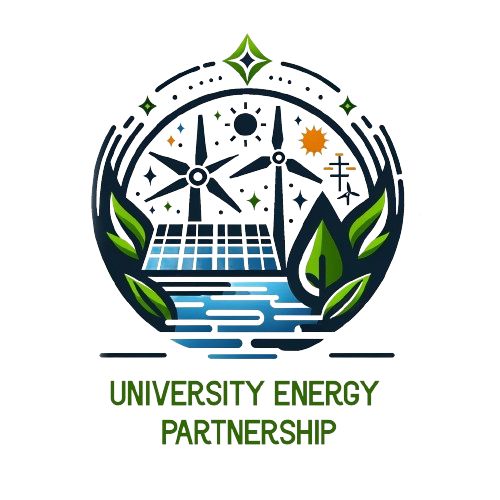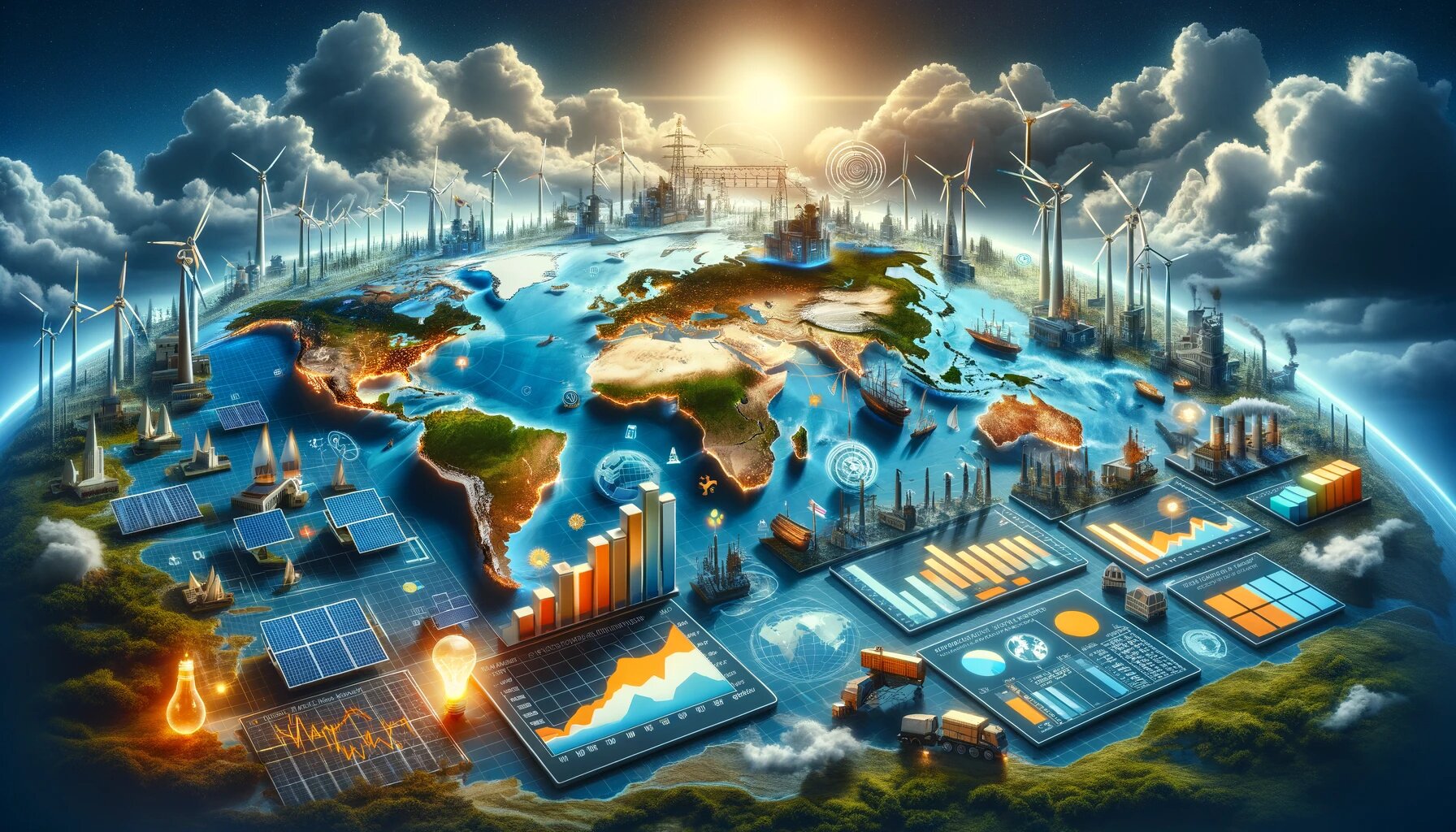Introduction
Renewable energy sources have gained significant importance in recent years as the world grapples with the challenges of climate change and energy security. These sources of energy, which include solar, wind, hydroelectric, and biomass, offer a sustainable and environmentally friendly alternative to fossil fuels. Different countries have taken varying approaches to harnessing renewable energy, and this article will provide a comparative analysis of renewable energy adoption in several nations.
The United States
The United States has made substantial progress in renewable energy adoption in recent years. With a vast landmass and diverse geographical features, the country has a significant potential for renewable energy generation. Key highlights of the U.S. renewable energy landscape include:
1. Solar Power
Solar power has seen tremendous growth in the United States. The country boasts numerous solar farms and rooftop solar installations, particularly in states like California and Arizona. Federal and state incentives have played a crucial role in promoting solar energy adoption.
2. Wind Energy
The U.S. is a leader in wind energy, with extensive wind farms across the Midwest and other regions. Texas, in particular, has become a hub for wind power generation. The Production Tax Credit has incentivized wind energy development, making it a prominent contributor to the country’s renewable energy mix.
3. Policy Framework
The United States has a diverse policy landscape for renewable energy, with a mix of federal and state-level incentives and regulations. The Investment Tax Credit (ITC) and the Production Tax Credit (PTC) have encouraged private investment in renewable energy projects.
Germany
Germany has been a pioneer in renewable energy adoption in Europe. The country’s ambitious goals and policy initiatives have made it a global leader in this regard. Key aspects of Germany’s renewable energy landscape include:
1. Energiewende
Germany’s “Energiewende,” or energy transition policy, aims to shift the country away from fossil fuels and nuclear energy. This initiative includes a strong focus on renewable energy sources such as wind and solar. Germany has made significant investments in wind farms and solar installations.
2. Feed-in Tariffs
Germany introduced a feed-in tariff system to encourage small-scale renewable energy production. This policy guarantees fixed payments for renewable energy producers, providing a reliable source of income and incentivizing investment in renewable technologies.
3. Grid Integration
One challenge Germany has faced is the integration of intermittent renewable sources into the national grid. The country has invested in grid infrastructure and smart grid technologies to effectively manage the fluctuations in renewable energy generation.
China
China, the world’s most populous country and the largest emitter of greenhouse gases has also become a major player in renewable energy adoption. The country has recognized the need to address environmental concerns and reduce its reliance on coal. Key features of China’s renewable energy landscape include:
1. Solar Manufacturing
China is the world’s largest manufacturer of solar panels. The country’s production capacity has driven down the cost of solar panels globally, making solar energy more accessible and affordable for many countries.
2. Hydropower
China has a significant hydropower capacity, with the Three Gorges Dam being one of the largest hydroelectric projects in the world. Hydropower has been a cornerstone of China’s renewable energy strategy.
3. Policy and Targets
China has set ambitious renewable energy targets to reach peak carbon emissions by 2030 and achieve carbon neutrality by 2060. The country’s policies include feed-in tariffs, subsidies, and incentives for renewable energy development.
India
India, another populous nation, has also been making strides in renewable energy adoption. The country faces energy security challenges and environmental concerns, making renewable energy an attractive option. Key elements of India’s renewable energy landscape include:
1. Solar Growth
India has experienced significant growth in solar energy capacity, driven by its abundant sunlight. The country has launched initiatives like the National Solar Mission to promote solar energy adoption.
2. Wind Energy
Wind power is a prominent source of renewable energy in India, with states like Gujarat and Tamil Nadu having substantial wind farms. India has set ambitious targets for wind energy capacity expansion.
3. Rural Electrification
India has focused on rural electrification through renewable energy solutions. Programs like the Deen Dayal Upadhyaya Gram Jyoti Yojana aim to provide electricity to remote villages through off-grid solar power systems.
Japan
Japan, a country prone to seismic activity and with limited natural resources, has also embraced renewable energy as a strategic move toward sustainability. Key aspects of Japan’s renewable energy landscape include:
1. Solar Energy
Given its limited land availability, Japan has invested heavily in solar energy, particularly residential and commercial rooftop installations. The country introduced feed-in tariffs to promote solar power adoption, leading to significant growth in the sector.
2. Wind Power
Japan has been expanding its wind energy capacity, particularly offshore wind farms. The government has identified offshore wind as a significant potential source of renewable energy and has set targets for its development.
3. Post-Fukushima Shift
The Fukushima nuclear disaster in 2011 prompted Japan to reevaluate its energy strategy. The government decided to reduce its reliance on nuclear power and increase the share of renewables in the energy mix, marking a significant policy shift.
Denmark
Denmark has been a frontrunner in renewable energy adoption in Europe, driven by ambitious policies and a commitment to sustainability. Key highlights of Denmark’s renewable energy landscape include:
1. Wind Energy
Denmark is a global leader in wind energy, with a strong focus on both onshore and offshore wind farms. The country’s wind turbines generate significant electricity, and Denmark is actively exporting wind technology and expertise.
2. Green Transition Act
Denmark’s Green Transition Act sets ambitious targets for reducing carbon emissions and increasing the share of renewable energy in its total energy consumption. This legislation reflects the country’s commitment to a sustainable future.
3. Energy Efficiency
Denmark strongly emphasizes energy efficiency in buildings and industries, complementing its renewable energy efforts. This approach helps reduce overall energy demand and complements the energy generated from renewables.
Brazil
With its vast natural resources and significant biodiversity, Brazil has capitalized on renewable energy sources to meet its energy needs and address environmental concerns. Key features of Brazil’s renewable energy landscape include:
1. Hydropower Dominance
Brazil relies heavily on hydropower for its electricity generation, with dams like the Itaipu and Belo Monte being prominent examples. The country’s abundant water resources make hydropower a key component of its energy mix.
2. Bioenergy
Brazil is a global leader in bioenergy, primarily derived from sugarcane ethanol production. Ethanol is widely used as a biofuel for transportation, reducing the country’s dependence on fossil fuels.
3. Solar and Wind Growth
In recent years, Brazil has also seen growth in solar and wind energy capacity. The government has introduced incentives and auctions to attract investments in these renewable sources.
Australia
With its vast landmass and abundant natural resources, Australia is making strides in renewable energy adoption, driven by a mix of federal and state-level policies. Key aspects of Australia’s renewable energy landscape include:
1. Solar Power
Australia has one of the highest solar penetration rates in the world, with rooftop solar installations being commonplace. Government incentives and rebates have encouraged households to invest in solar energy systems.
2. Wind Energy
Wind power is also on the rise in Australia, with significant wind farm developments across the country. The Australian Renewable Energy Target (RET) has been instrumental in promoting wind energy projects.
3. Policy Diversification
Australia’s approach to renewable energy policy varies by state, with some states having more aggressive targets and policies than others. This decentralized approach allows for flexibility in meeting renewable energy goals.
Conclusion
The global transition to renewable energy sources represents a diverse and dynamic effort by countries worldwide. While each nation, including the United States, Germany, China, India, Japan, Denmark, Brazil, and Australia, has its unique approach to renewable energy adoption, common themes emerge.
Government policies, incentives, and technological advancements are driving the shift toward renewable energy. These strategies have made solar, wind, hydropower, and bioenergy increasingly cost-competitive. However, challenges like intermittency and financial commitments persist.
International collaboration and knowledge sharing are essential to accelerate renewable energy adoption. As nations strive to reduce carbon emissions, enhance energy security, and create a cleaner, sustainable world, the transition to renewable energy remains an imperative shared by all.

